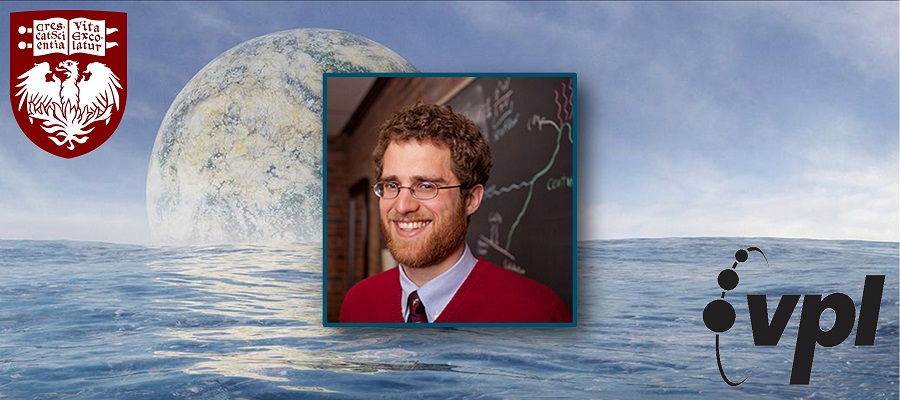Liquid water oceans are at the center of our search for life on exoplanets because water is a strict requirement for life as we know it. However, oceans are dynamic habitats—and some oceans may be better hosts for life than others. In Earth’s ocean, circulation transports essential nutrients such as phosphate and is a first-order control on the distribution and productivity of life. Of particular importance is upward flow from the dark depths of the ocean in response to wind-driven divergence in surface layers.
Dorian Abbot and postdoctoral fellow Stephanie Olson’s recent publication “Oceanographic Considerations for Exoplanet Life Detection” has been receiving some press…
The habitable zone (HZ) is commonly defined as the range of distances from a host star within which liquid water, a key requirement for life, may exist on a planet’s surface. Substantially more CO2 than present in Earth’s modern atmosphere is required to maintain clement temperatures for most of the HZ, with several bars required at the outer edge. However, most complex aerobic life on Earth is limited by CO2 concentrations of just fractions of a bar. At the same time, most exoplanets in the traditional HZ reside in proximity to M dwarfs, which are more numerous than Sun-like G dwarfs but are predicted to promote greater abundances of gases that can be toxic in the atmospheres of orbiting planets, such as carbon monoxide (CO). Here we show that the HZ for complex aerobic life is likely limited relative to that for microbial life. We use a 1D radiative-convective climate and photochemical models to circumscribe a Habitable Zone for Complex Life (HZCL) based on known toxicity limits for a range of organisms as a proof of concept. We find that for CO2 tolerances of 0.01, 0.1, and 1 bar, the HZCL is only 21%, 32%, and 50% as wide as the conventional HZ for a Sun-like star, and that CO concentrations may limit some complex life throughout the entire HZ of the coolest M dwarfs. These results cast new light on the likely distribution of complex life in the universe and have important ramifications for the search for exoplanet biosignatures and technosignatures.
Some atmospheric gases have been proposed as counter indicators to the presence of life on an exoplanet if remotely detectable at sufficient abundance (i.e., antibiosignatures), informing the search for biosignatures and potentially fingerprinting uninhabited habitats. However, the quantitative extent to which putative antibiosignatures could exist in the atmospheres of inhabited planets is not well understood. The most commonly referenced potential antibiosignature is CO, because it represents a source of free energy and reduced carbon that is readily exploited by life on Earth and is thus often assumed to accumulate only in the absence of life. Yet, biospheres actively produce CO through biomass burning, photooxidation processes, and release of gases that are photochemically converted into CO in the atmosphere. We demonstrate with a 1D ecosphere-atmosphere model that reducing biospheres can maintain CO levels of ~100 ppmv even at low H2 fluxes due to the impact of hybrid photosynthetic ecosystems. Additionally, we show that photochemistry around M dwarf stars is particularly favorable for the buildup of CO, with plausible concentrations for inhabited, oxygen-rich planets extending from hundreds of ppm to several percent. Since CH4 buildup is also favored on these worlds, and because O2 and O3 are likely not detectable with the James Webb Space Telescope, the presence of high CO (>100 ppmv) may discriminate between oxygen-rich and reducing biospheres with near-future transmission observations. These results suggest that spectroscopic detection of CO can be compatible with the presence of life and that a comprehensive contextual assessment is required to validate the significance of potential antibiosignatures.
